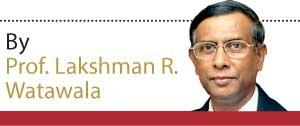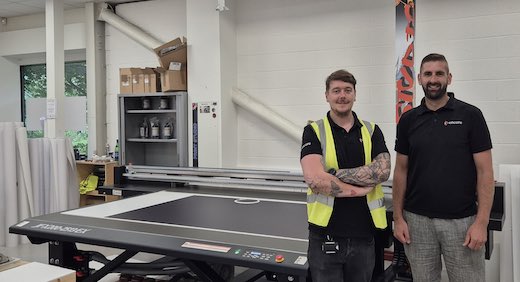200 Garment Factories Programme – the foremost overseas change earner for Sri Lanka
Success elements
- Areas labeled as Non – Tough, Tough, Most Tough and this standards utilized in distributing quotas and grant of Tax Incentives
- Operation of One-stop-shop at BOI
- Use of American Garment Quota distributed as per the fastened standards of space allotted
- Non-public and Public Sectors to work with “Can do perspective”and a agency believer of “Stroll the Discuss”
On the thirtieth loss of life anniversary of President Premadasa we must always recognise the foremost contribution made to the financial growth along with his foresight to arrange the 200 garment factories programme as the foremost industrial growth mission unfold all through the nation creating employment and exports bringing within the precious overseas change to the nation.
factories programme as the foremost industrial growth mission unfold all through the nation creating employment and exports bringing within the precious overseas change to the nation.
One other lesson to be taught is that each one governments continued the garment factories programme which is immediately the foremost industrial export from Sri Lanka.
Because the Chairman and Director Normal of the Higher Colombo Financial Fee (GCEC) which was in 1991 transformed to the Board of Funding (BOI) of Sri Lanka we had been chargeable for the implementation of this very formidable 200 Garment Manufacturing facility Programme to be arrange all through the nation
GCEC/BOI
I used to be Chairman of the Folks’s Financial institution and one night I had a name from the secretary finance Mr Paskaralingam who informed me that the President needed me to take over the GCEC (now BOI). This was fairly a shock for me as I had been Chairman of Folks’s Financial institution below President Jayewardene and continued below President Premadasa and the change meant I needed to begin another time and settle for the problem given to me.
The GCEC/BOI was a really highly effective group which was arrange with the open financial insurance policies introduced in by President J R Jayewardene in 1977 primarily created to approve overseas direct funding for the export market coming straight below the President and had three main powers of giving Tax Incentives, approval to open a overseas forex banking account and finishing up Customs features for the imports and exports regarding GCEC/BOI corporations.
The idea of the 200 Garment factories programme
 It was the late Kumar Dewapura who was the Chairman of the Tri Star Group who invited President Premadasa with the assist of the Chief Minister Gamini Jayawickrema Perera to open a garment manufacturing unit within the Kurunegala District. There, the President was very impressed with the operations of the garment manufacturing unit and needed to know the way he had arrange this manufacturing unit. Kumar Dewapura defined how the USA garment quota given free to Sri Lanka helped him to fabricate clothes for the export market and this supplied jobs to the agricultural ladies. Additionally, that at current that there is no such thing as a full utilisation of the garment quota and that solely a privileged few had been benefitting from the garment quotas.
It was the late Kumar Dewapura who was the Chairman of the Tri Star Group who invited President Premadasa with the assist of the Chief Minister Gamini Jayawickrema Perera to open a garment manufacturing unit within the Kurunegala District. There, the President was very impressed with the operations of the garment manufacturing unit and needed to know the way he had arrange this manufacturing unit. Kumar Dewapura defined how the USA garment quota given free to Sri Lanka helped him to fabricate clothes for the export market and this supplied jobs to the agricultural ladies. Additionally, that at current that there is no such thing as a full utilisation of the garment quota and that solely a privileged few had been benefitting from the garment quotas.
President Premadasa who was inclined in direction of professional poor growth and devoted in direction of growth of the agricultural areas was attracted in direction of the position that may be performed by garment factories and obtained the thought for the launch of the 200 Garment manufacturing unit Programme.
The formidable goal was 200 garment factories with every manufacturing unit having 500 staff with desire given to Janasaviya households from the poorest of the poor offering 100,000 jobs primarily to females and placing into the financial system Rs. 500 million to Rs.1.0 billion monthly. The mission to be undertaken by native and overseas non-public buyers.
The accountability to hold out the 200 Garment manufacturing unit Programme was given completely to the GCEC/BOI. This resulted within the conversion of GCEC to BOI inside a interval of two weeks with approval of parliament.
The scheme was drawn as much as appeal to non-public buyers each native and overseas below the 200 Garment factories Programme and a few of the incentives and amenities supplied had been as follows.
Tax holidays primarily based on the world of operation, opening of a overseas forex account, import of equipment and uncooked supplies responsibility free, speedy clearance of import and export amenities by the organising of the separate BOI customs clearing centre, operation of one-stop store, to arrange the cupboard sub-committee on investments, infrastructure amenities corresponding to land, electrical energy, phone, water, roadways,export quotas to USA relying on the world chosen starting from 10,000 dozens for non-difficult, 25,000 dozens for tough and 50,000 for many tough areas.All buyers had been to be a supplied the import of a Benz automotive responsibility free on the completion of every garment manufacturing unit mission.
Implementation of the 200 Garment factories Programme
On the graduation of the programme I invited the highest garment producers affiliation for a gathering to elucidate the 200 Garment manufacturing unit Programme and so they sarcastically informed me that no more than 7 or 8 factories could possibly be arrange. Nobody additionally got here ahead to begin a manufacturing unit.
Within the meantime President Premadasa had his personal methods to kick off the 200 Garment manufacturing unit Programme which led to its success. The president labored intently with Kumar Dewapura who gave him the thought and supplied him the assist in organising of the primary 2 to three garment factories which had been opened by the president with a lot fanfare and publicity in newspapers, radio and TV. This opened the eyes of these within the garment business together with the Garment Producers Affiliation in addition to many others who realised the attractiveness of the mission and got here dashing to acquire approval. BOI was working day and night time, approving initiatives and giving the mandatory assist to buyers.
The industrial and growth banks supported the 200 Garment factories Programme and funded buyers to begin initiatives early to satisfy the strict deadlines to open factories.
We additionally had quite a few conferences with buyers, authorities ministries, industrial banks chaired by the late president himself and others chaired by the finance secretary to help buyers in organising factories and likewise fixing issues encountered by buyers.
We had frequent conferences at Sucharitha the place President Premadasa invited buyers who got dates to open their factories and solved any issues on the spot. All the time at these conferences the Chairman or GM of CEB, Roadways and Water Board had been current and able to present options to buyers with regard to any issues of the provision of electrical energy provide, roadways and water provide.
We had buyers from USA, UK, Hong Kong, Singapore and Germany investing in factories within the rural areas hitherto not even considered by any industrialist, native or overseas.
Since President Premadasa didn’t tolerate any political interference, we hardly bumped into issues with any of the politicians within the electorates.
Opening of Garment Factories
Within the 200 Garment manufacturing unit Programme, the late president was current for all of the official openings of factories and gave opening dates to all buyers and so they needed to work around the clock to open their factories on the scheduled dates. The opening of a manufacturing unit was marked by the development of a clock tower giving recognition to the cities to have a clock tower much like the celebrated clock towers in Fort and Pettah.
On the time of President Premadasa’s premature loss of life, 160 areas had been allotted to assemble garment factories and 117 factories had been opened by the late president nearly one per week. This additionally included the opening of the clock towers and a public assembly and a musical programme. There have been six factories prepared for opening and 37 factories below building. A feat unmatched within the industrial and export growth in Sri Lanka.
The opposition members ridiculed the 200 Garment manufacturing unit Programme as an business making “Jangi” that means “underwears for women”. Some others mentioned it was a fly by night time business and never sustainable. Nevertheless, president Premadasa had taken the proper resolution as that is the one mission continued by successive governments and immediately the very best industrial export earner and offering jobs to many particularly for females.
Conclusion:
The 200 garment manufacturing unit programme was one of many only a few initiatives that had been supported by all successive governments that took energy after President Premadasa and this enabled the Attire and Garment exports to develop from app. US $ 764 M in 1991 the launch yr to achieve US $ 5.483 billion in 2022.The established larger Garment manufacturing unit corporations who had their beginnings with the 200 Garment factories Programme have expanded abroad and at the moment are multinational corporations bringing credit score to Sri Lanka,
Immediately with the huge overseas change crises the federal government must embark on formidable export-oriented programmes which wants the dedication, braveness and end result orientation of President Premadasa.
Much like the USA Garment Export Quotas, we must always signal Free Commerce Agreements to advertise industrial and providers exports reasonably than imports.
One other success issue of President Premadasa was that he by no means took “no” for a solution and needed all to have a “can do” perspective with a “constructive mindset”. He was a agency believer of ‘Stroll the Discuss’ that means ‘practise what you preach’.
President Premadasa’s export oriented growth insurance policies and serving to the poorest of the poor are true qualities of a grassroot politician carried ahead by all successive governments with no match to his dedication and achievements.
(The author is Former Chairman and Director Normal Board of Funding of Sri Lanka and Higher Colombo Financial Fee and Former Chairman of The Folks’s Financial institution.)

